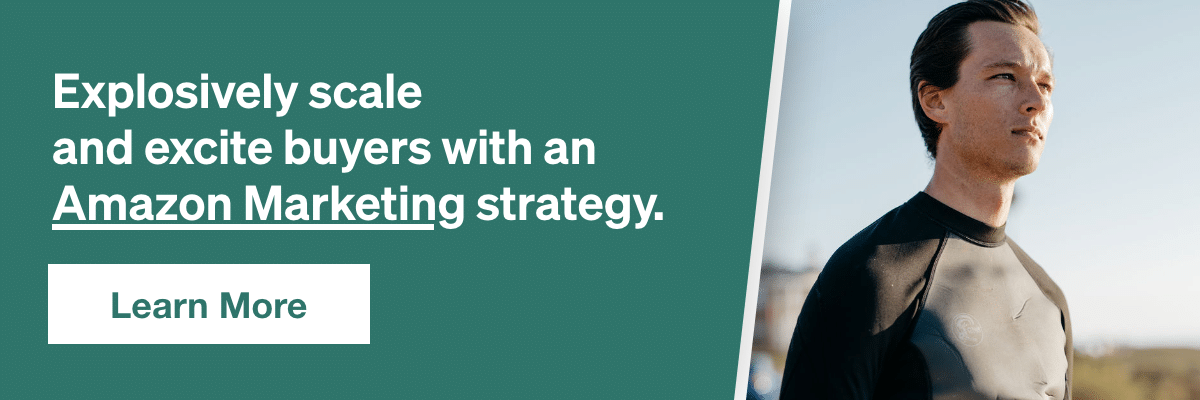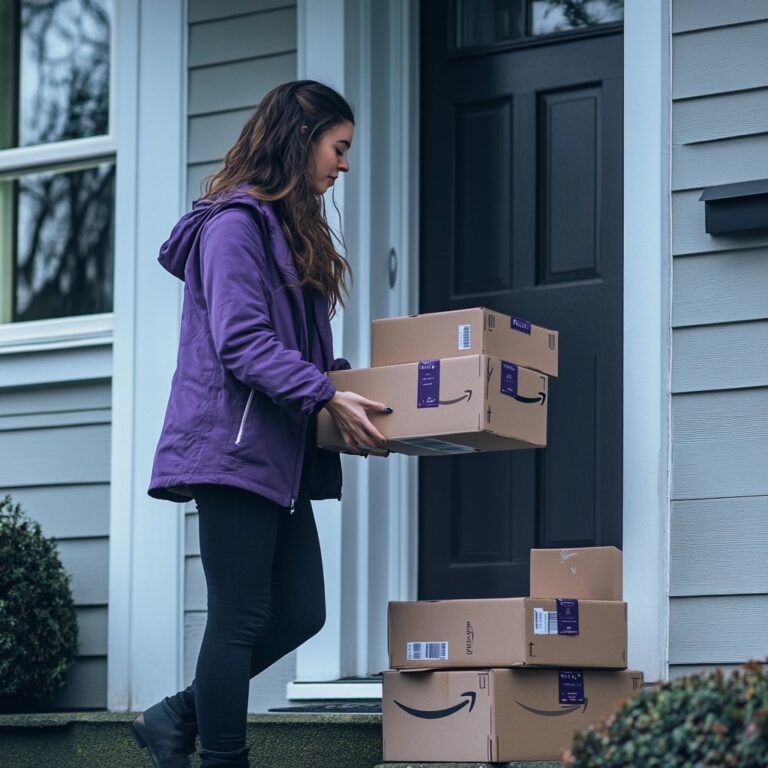What is Amazon Logistics?

Over the years, Amazon has branched into different industries. One example is Amazon Fresh which caters to grocery delivery and pick-up services; this is just one of Amazon’s services, however. Another one is Amazon Logistics.
If your company plans on selling products on Amazon, there’s a learning curve and how to use Amazon coupons isn’t your only concern. If you have years of experience shipping and fulfilling orders yourself, it’s normal to wonder whether you should switch to Amazon’s fulfillment and logistics services.
Like Amazon launchpad, Amazon Logistics is also a relatively new shipping service founded by Amazon. Some companies that offer Amazon marketing services are already familiar with it. Logistics fills in the gaps where other shipping services grind to a halt, leading to super-fast delivery (and, theoretically, satisfied customers).
However, less control over your fulfillment services means less control over shipping snafus.
So, will using Amazon Logistics help or harm your overall Amazon marketing strategy? Let’s take a look.
How Amazon Logistics Delivers Packages
For business owners, understanding what is Amazon pay and knowing how to use it is only the first step. Amazon has plenty of services that will help them with their ecommerce marketing strategy.
Amazon Logistics is a key service as well. It ensures that packages arrive at lightning speed—within the two days guaranteed by Amazon Prime, if not faster.
How does Amazon guarantee this?
Amazon Logistics orders aren’t fulfilled by Amazon employees.1 Instead, Amazon subcontracts shipping and delivery services from two kinds of partners:
- Individual drivers – Through the Amazon Flex program, drivers can sign up to deliver packages as their schedules allow. The program is similar to other popular driver apps like Uber and Seamless. In fact, a delivery driver uses several at once.
- Amazon Delivery Service Partner (DSPs) – Amazon also partners with independently owned and operated delivery services companies. The DSPs or delivery partners have their own vehicles and drivers, therefore requiring minimal investment from Amazon. Amazon actually benefits financially, since some DSPs lease branded vehicles from Amazon. These relatively small organizations must have fewer than 100 employees and 40 vans to qualify for the delivery service partner program.
It’s clear what this arrangement brings to Amazon: a low-cost way to fulfill its orders without raising the capital to start its own version of FedEx. Since Amazon Logistics providers aren’t actually Amazon employees, the company doesn’t have to pay for insurance, benefits, or just about anything else.
There are also some tangible benefits for consumers.
- While traditional shipping companies like FedEx, UPS, and USPS only deliver on weekdays and during working hours, Amazon Logistics fulfills orders during hours that were once considered “off-business”—late at night and even on New Year’s Day. Just take note of your tracking number, and you will be good to go.
- Amazon Logistics fulfillers drop off packages without requiring a signature. In some cases, they take a photo of the package to confirm it was delivered. In others, they leave it in a discrete location with instructions for the customer.
- Customers can track the location of their Amazon package online, getting a very clear sense of when it might be delivered.
So, how does all of this impact third-party sellers in the Amazon marketplace?
Amazon Logistics for Sellers
Succeeding on Amazon requires a multi-pronged approach.
First, there’s the task of actually showing up in search results and selling your products. This requires an effective Amazon marketing strategy, a strong brand identity, and top-notch product descriptions.
Then, once customers click “Purchase,” there’s the work of keeping them happy.
Amazon Logistics can help in this regard. After all, it’s often the fastest way to get a package from point A to point B. Fast shipping speeds can lead to five star-reviews and soaring success.
But there are also some potential downsides.
Cons of Amazon Fulfillment
If your customers don’t receive their packages as expected, your reputation can take a hit.
- When your shipment is handled by Amazon Logistics, you won’t be able to choose a specific carrier (i.e., USPS or FedEx). With less tested companies, there’s always the risk of shipping issues. That means extra time spent solving customer service complaints and troubleshooting your Amazon product rating.
- Your shipping speed and accuracy can play a huge role in your average product rating. Unfortunately, customers with damaged or lost packages may be more eager to leave reviews than those who received their products as expected.
- Amazon Logistics providers may have less training and bandwidth when it comes to handling sensitive or fragile packages.
- A low rating can disqualify you from participation in some special Amazon programs for small businesses like Amazon Launchpad.
So, how can you make the right fulfillment choice for the goods you sell on Amazon?
Choosing Your Fulfillment Option
When you’re selling on Amazon, you must aim for speed, security, and a minimum number of customer service complaints. Therefore, the best option for you depends on your sales volume, the specific product you sell, and your other eCommerce platforms.
Let’s take a look.
For Maximum Control, Fulfill Your Own Orders
Do you have a product that fits one of the following descriptions?
- Fragile
- Special handling instructions
- Valuable
- Needs assembly before shipping
If so, there’s a good chance that you’ll want to pack and ship the orders yourself (or work with a trusted fulfillment partner). That way, you can choose a carrier that knows exactly how to handle your product and the consequences if they make an error.
The upside of seller fulfillment is more control over all aspects of the process. You can include stickers and personalized notes in your packages to customers to make the process feel personal.
Likewise, you’ll be able to fulfill orders made through multiple sales channels, from Etsy to Instagram to your webpage.
But there are a few downsides:
- Customers will receive orders slower than they might with Fulfillment by Amazon (FBA).
- You or your logistics partner will need to communicate with the customer to provide tracking updates.
- Without Prime shipping speeds, you won’t show up in the “Buy it Now” box at the top of search results.
- You’re completely responsible for solving all customer issues and complaints.
For Speed and Control, Enroll in Seller-Fulfilled Prime
Are you confident you can get orders where they need to go in two days?
You may be able to enroll as a Seller-Fulfilled Prime provider. To achieve this coveted status and appear in the “Buy it Now” Box, you’ll need to meet the following requirements:2
- Deliver in 1-2 days
- Ship your orders on-time 99% of the time (or more!)
- Use Amazon Buy shipping services
- Agree to the Amazon returns policy
The good news? When you enroll in seller-fulfilled prime, Amazon will deal with customer service inquiries related to shipping and returns.
Fulfillment-by-Amazon (FBA) Services
Want to take the hassle out of shipping? If your goods don’t require specialized packing or handling, another option is letting Amazon fulfill your orders.
With FBA services, you send your goods to Amazon warehouses. Then, the retailer is responsible for all aspects of the shipping process, including customer service for returns and undelivered items.
Because Amazon always has extras on hand (and takes full responsibility for errors), you’re highly unlikely to receive negative feedback even if an Amazon Logistics provider delivers a dinged-up package.
And as Amazon expands its fulfillment offerings, you can potentially use FBA to fulfill orders placed on other eCommerce sites.
For Successful Shipping, Use the Following Tips
Depending on the fulfillment method you choose, Amazon Logistics might be an unavoidable step in your products’ journey. But that doesn’t mean you have zero control over how customers perceive your brand and customer service.
Communication should be a key part of your Amazon strategy. To that end, try out the following tips:
- Send automated emails when customers make a purchase to say “thank you,” provide a timeframe for shipping and share any contact information they might need.
- If you’re fulfilling the order yourself (or using a logistic partner other than Amazon), make sure to upload tracking information as soon as it’s available.
- After customers have received their orders, ask them to give you a five-star rating or contact you with any concerns. This clear CTA can ensure that customers know where to go with their gripes (and their praise).
Other Aspects of Your Amazon Marketing Campaign
Beyond your fulfillment decisions, take the following additional steps to succeed on Amazon:
- Paid advertising – Could you benefit from a pay-per-click (PPC) campaign? Paid ads can get more eyeballs on your products. If customers like them, you can build up a stockpile of positive reviews. This can be an effective way to get a foothold on Amazon.
- Search engine optimization (SEO) – Target keywords that maximize the chances your product will show up in search results. For best results, use these same keywords in your larger SEO strategy across your blog, YouTube channel, and other sales channels.
- Attractive detail page – Customers sifting through the millions of products on Amazon want to make sure you’re a reliable brand. Outfit your Amazon page with media, including high-resolution photographs and video. Make sure you put as much effort into your design as you do your website and social media posts.
Of course, it can take time to figure out the ins and outs of Amazon.
That’s why the platform offers support for small businesses in the form of its Amazon Launchpad initiative. This program pairs small businesses with marketing liaisons who help them design their detail pages and get started with FBA. Then, they’re highlighted through the Amazon Launchpad store. Of course, this help comes with a price—an additional 5% on existing Amazon referral fees.
But if your goal is to create a holistic marketing strategy that promotes a cohesive brand across platforms and sales channels, an independent marketing agency might be the better choice.
Let Power Digital Manage Your Marketing Logistics
Each business has to conduct its own cost-benefit analysis of Amazon Logistics and other fulfillment services.
Then, once you’ve made your choice, the products are eventually out of your hands, on their way to their final destination.
While you can’t control the postal service, you can definitely manage (and measure!) the effectiveness of your promotional strategies on Amazon and other eCommerce sales channels.
Here at PDM, we’re experts in the right elements to a successful Amazon campaign and the ways they can translate to other areas of your overall marketing strategy. Get in touch today to learn more about what we can deliver.
Sources:
- Amazon. Logistics. https://logistics.amazon.com/
- Amazon. Seller fulfilled prime. https://sell.amazon.com/programs/seller-fulfilled-prime.html
Our Editorial Standards
Reviewed for Accuracy
Every piece is fact-checked for precision.
Up-to-Date Research
We reflect the latest trends and insights.
Credible References
Backed by trusted industry sources.
Actionable & Insight-Driven
Strategic takeaways for real results.





